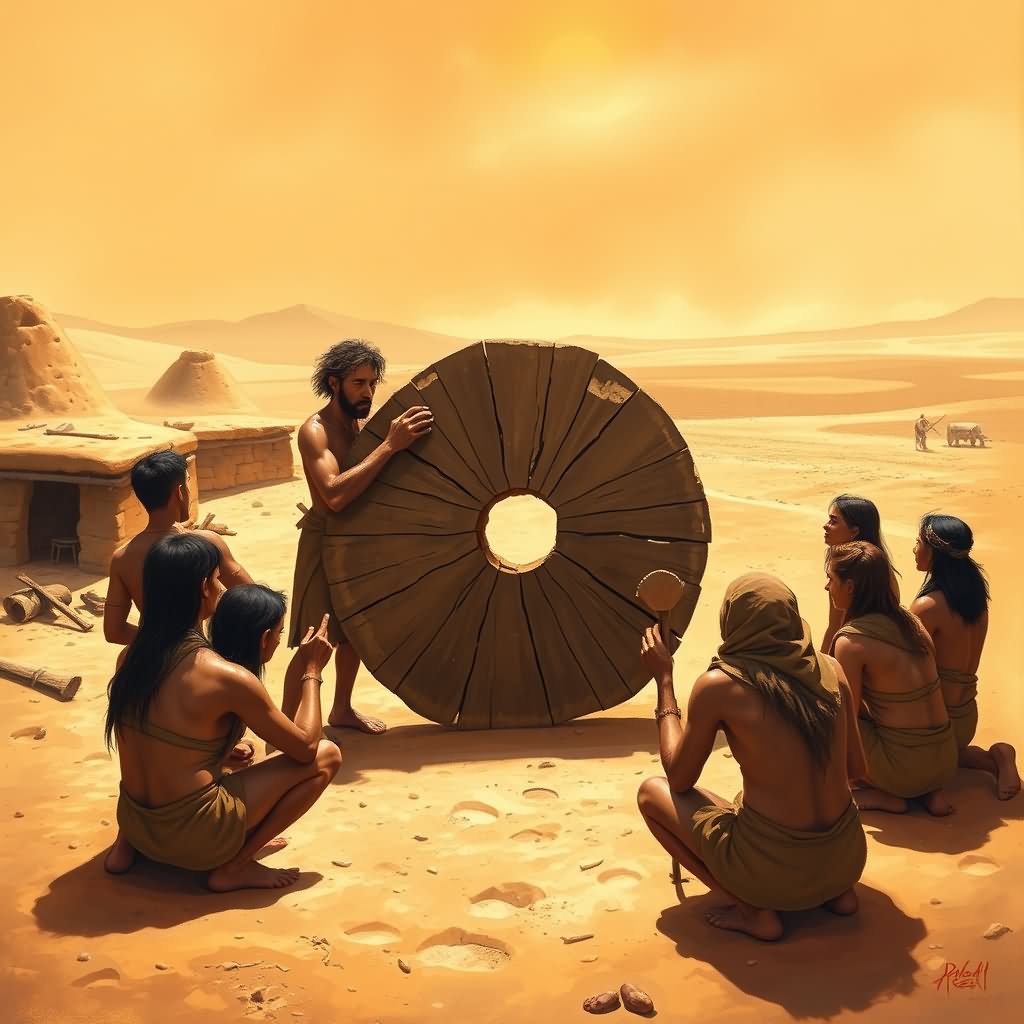The wheel, a cornerstone of human technological progress, is often hailed as one of humanity’s most transformative inventions. Yet, its origins are shrouded in the mists of prehistory, with no single individual credited for its creation. Instead, the wheel emerged from the collective ingenuity of ancient civilizations, evolving over millennia to become a linchpin of transportation, industry, and culture. This article explores the fascinating history of the wheel, tracing its earliest known uses, its diffusion across civilizations, and its profound impact on human society.
Earliest Evidence: Mesopotamia and Beyond
The wheel’s story begins in ancient Mesopotamia (modern-day Iraq) around 3500 BCE, where the earliest evidence of wheeled vehicles appears. Archaeological discoveries, such as clay tablets and pictographs, depict sledges transitioning into wheeled carts. These early wheels were solid wooden discs, crafted from planks lashed together and rounded into a circular shape. Initially used for pottery – a rotary device known as the potter’s wheel predates transport wheels by centuries – the technology was adapted for mobility by pairing wheels with a fixed axle, a critical innovation that allowed smooth rotation.
However, Mesopotamia is not the sole claimant to early wheel use. In 2002, a wooden wheel dated to 3200 BCE was unearthed in Slovenia’s Ljubljana Marshes, signaling that wheel technology spread rapidly across Eurasia or possibly arose independently in Europe. Similarly, the Indus Valley Civilization (circa 3000 BCE) utilized wheeled carts, as evidenced by toy models and seals depicting ox-drawn vehicles.
The Axle: A Revolutionary Pairing
The true breakthrough lay not in the wheel itself but in its combination with the axle. Early axles were simple cylindrical rods, but crafting a stable, low-friction interface between wheel and axle required remarkable precision. Mesopotamian artisans likely used copper chisels and saws to shape hardwood axles, enabling the birth of wheeled transport. This innovation revolutionized trade and warfare, as carts hauled goods and chariots became instruments of conquest. By 2000 BCE, lighter spoked wheels emerged in Egypt and the Eurasian steppes, exemplified by the Sintashta culture’s war chariots, which prioritized speed and maneuverability.
Global Perspectives: Independent Invention or Cultural Diffusion?
While Eurasia embraced the wheel, its adoption was uneven globally. In the Americas, wheeled toys from Mesoamerica (circa 1500 BCE) suggest knowledge of the wheel, yet no wheeled vehicles existed. Scholars speculate that dense jungles, mountainous terrain, and the absence of large draft animals like horses or oxen limited its utility. Conversely, the Inca Empire built vast roads but relied on llamas and human porters, underscoring how geography and resources shaped technological choices.
In China, wheeled vehicles appeared by 1200 BCE, possibly through contact with steppe nomads. The Chinese later innovated with the wheelbarrow (circa 100 CE), enhancing agricultural efficiency. Meanwhile, water wheels and gears, developed in the Hellenistic world (3rd century BCE), expanded the wheel’s applications beyond transport into milling and machinery.
Why Did the Wheel Take So Long to Invent?
Given its apparent simplicity, the wheel’s late emergence – nearly 300,000 years after modern humans evolved – puzzles historians. Several theories explain this delay:
- Technological Barriers: Crafting a functional axle-wheel assembly required advanced woodworking tools, such as metal chisels, which only became widespread after the Bronze Age (3300 – 1200 BCE).
- Societal Needs: Sedentary agrarian societies, reliant on surplus goods and trade, had greater incentive to develop wheeled transport than nomadic groups.
- Conceptual Hurdles: The wheel’s operation hinges on understanding rotational motion, a non-intuitive principle in a world dominated by linear movement.
Legacy and Impact
The wheel’s influence permeates every facet of modern life. It enabled the rise of cities by facilitating trade, spurred military advancements through chariots and later tanks, and underpinned industrial machinery during the 18th-century Industrial Revolution. Symbolically, the wheel endures as a metaphor for cyclical time, progress, and fortune across cultures.
Conclusion
The wheel’s invention was not a singular event but a cumulative process shaped by necessity, environment, and cross-cultural exchange. From the fertile crescent of Mesopotamia to the river valleys of the Indus and beyond, the wheel’s journey reflects humanity’s shared ingenuity. While its origins remain anonymous, its legacy is universal – a testament to the enduring power of human innovation.

